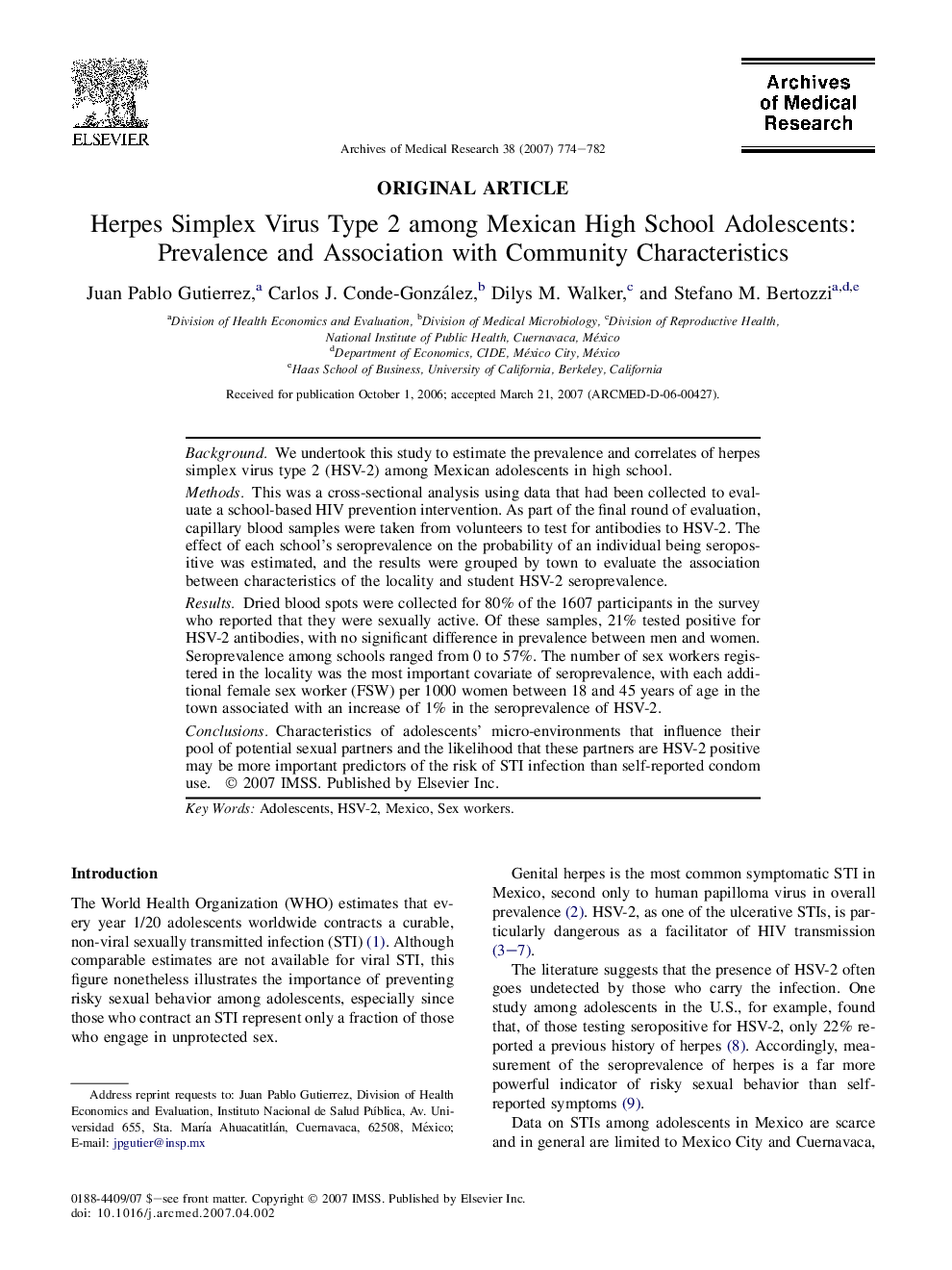| Article ID | Journal | Published Year | Pages | File Type |
|---|---|---|---|---|
| 3447500 | Archives of Medical Research | 2007 | 9 Pages |
BackgroundWe undertook this study to estimate the prevalence and correlates of herpes simplex virus type 2 (HSV-2) among Mexican adolescents in high school.MethodsThis was a cross-sectional analysis using data that had been collected to evaluate a school-based HIV prevention intervention. As part of the final round of evaluation, capillary blood samples were taken from volunteers to test for antibodies to HSV-2. The effect of each school's seroprevalence on the probability of an individual being seropositive was estimated, and the results were grouped by town to evaluate the association between characteristics of the locality and student HSV-2 seroprevalence.ResultsDried blood spots were collected for 80% of the 1607 participants in the survey who reported that they were sexually active. Of these samples, 21% tested positive for HSV-2 antibodies, with no significant difference in prevalence between men and women. Seroprevalence among schools ranged from 0 to 57%. The number of sex workers registered in the locality was the most important covariate of seroprevalence, with each additional female sex worker (FSW) per 1000 women between 18 and 45 years of age in the town associated with an increase of 1% in the seroprevalence of HSV-2.ConclusionsCharacteristics of adolescents' micro-environments that influence their pool of potential sexual partners and the likelihood that these partners are HSV-2 positive may be more important predictors of the risk of STI infection than self-reported condom use.
